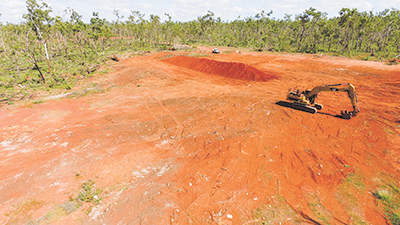East Arnhem Regional Council has deployed drones in the large-scale clean-up effort following two destructive cyclones.
Local government’s increasing use of unmanned aerial vehicles, or drones as they are more commonly known, is a growing field of interest and one at the forefront of East Arnhem Regional Council operations in the wake of two devastating cyclones.
Nearly a year ago, Cyclones Lam and Nathan caused widespread destruction across the region, leaving many areas still recovering.
These events, and the mammoth clean up and rebuild which followed, has created an excessive volume of waste and highlights the significance of waste management as a key Council priority.
East Arnhem Regional Council is currently undertaking consolidation works at the Ramingining Landfill site where waste has been both legally and illegally dumped, with similar captures having been completed in both Milingimbi and Galiwin’ku.
Management of this project involved the daily surveillance of the consolidation areas by use of an unmanned aircraft.
East Arnhem Regional Council’s Director of Technical Services, Shane Marshall, is excited by the new prospects this technology is bringing to Council’s arsenal of tools.
“This aerial capture has markedly assisted in our understanding of the progression and outcomes of these works.
“With over 33,000km2 of land mass under our governance, the uses for this technology are endless.
“Already we’ve identified key benefits of using the drone in other areas of asset management, mapping and disaster management, tree condition assessments, wetlands assessment and feral animal monitoring”.
Due to the overwhelming results seen by the introduction of the drones, an additional three Council staff will undertake the RPAS Remote Pilot Certificate course in the coming months, including our young Indigenous Technical Services Trainee.
Council is conducting a full review of waste services across the region, identifying the use of the unmanned aerial vehicle as vital in the collection of information; the report is expected to be completed in May.








